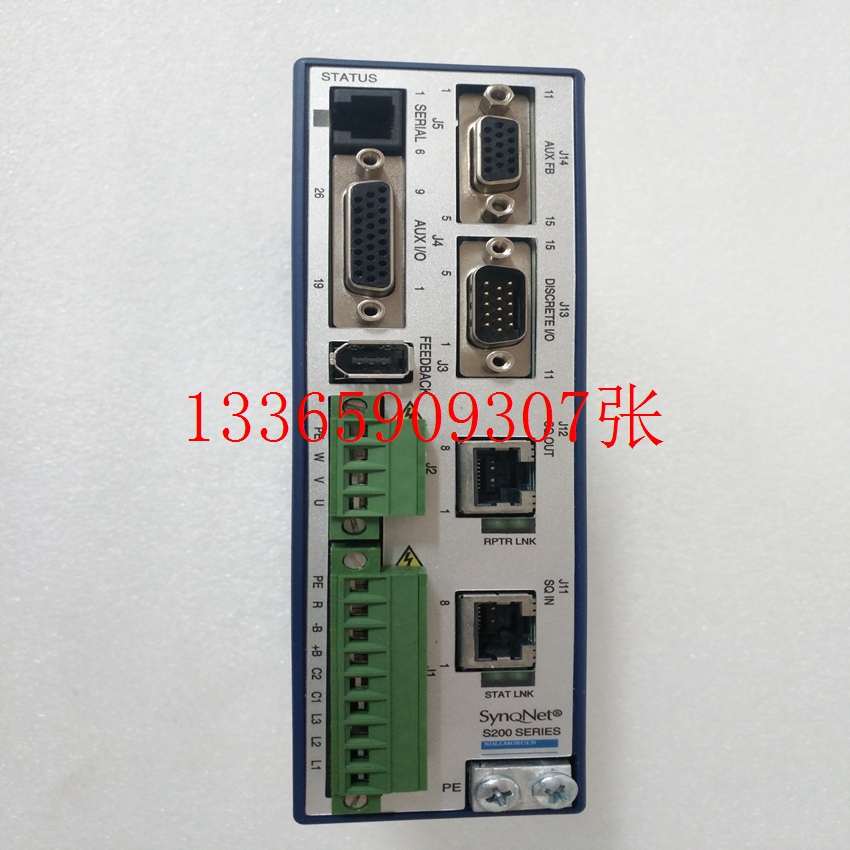KOLLMORGEN S20260-SRS S200 servo drive system
Kollmorgen drives have revolutionized industrial motion control. Some Kollmorgen servo drives support SynqNet network, an upgraded version of the Ethernet network, is specially designed for high performance applications. The difference between the two networks is that SynqNet replaced the noise-prone analog Ethernet with a digital network designed along performance, reliability, and performance. Kollmorgen servo drives address the connectivity aspect by supporting a variety of industrial networks including, but not limited to, Ethernet/IP, EtherCAT, DeviceNet, CanOpen, and RS485. They also, support a wide range of feedback devices such as incremental encoders, absolute encoders, Hiperface, and EnDat.
The S20260-SRS is a compact high performance brushless servo drive designed and manufactured by Kollmorgen. The drive has an input power rating of between a minimum of 120 Volts AC and a maximum of 240 Volts AC. At an ambient temperature of between 0.0 degrees Celsius and 30.0 degrees Celsius, the drive has a continuous output current convection of 2.3 ARMS, a minimum peak current time of 3.0 seconds, and a peak output current of 4.5 ARMS at a surrounding temperature of between a minimum of 0.0 degrees Celsius and 50.0 degrees Celsius. The S20260-SRS is part of the Kollmorgen S200 servo drives.
Drives in this family conform to international directives for low voltage, electromagnetic compatibility, among others. Also, S200 servo drives feature standard torque or velocity control. However, some drives in this family, such as the S20260-SRS, have factory installed options that allow them to support SynqNet motion bus option card. For one second, the S20260-SRS has a peak output power rating of 1500 VA, 1400 VA, and 700 VA at 240 Volts AC 3 phase, 240 Volts AC single phase, and 120 Volts AC single phase respectively.
伺服系统由电机(DC或交流)、电位计、齿轮组件和控制电路组成。首先,我们使用齿轮组件来降低转速和增加电机的扭矩。比方说在伺服电机轴的初始位置,电位计旋钮的位置使得在电位计的输出端口没有电信号产生。现在,电信号被提供给误差检测放大器的另一个输入端。现在,这两个信号之间的差异,一个来自电位计,另一个来自其他来源,将在反馈机制中处理,输出将以误差信号的形式提供。该误差信号作为电机的输入,电机开始旋转。现在,电机轴与电位计相连,随着电机旋转,电位计将产生信号。因此,当电位计的角位置改变时,其输出反馈信号也会改变。一段时间后,电位计的位置达到电位计的输出与外部提供的信号相同的位置。在这种情况下,放大器没有输出信号到电机输入端,因为外部施加的信号和电位计产生的信号之间没有差异,在这种情况下,电机停止旋转。


